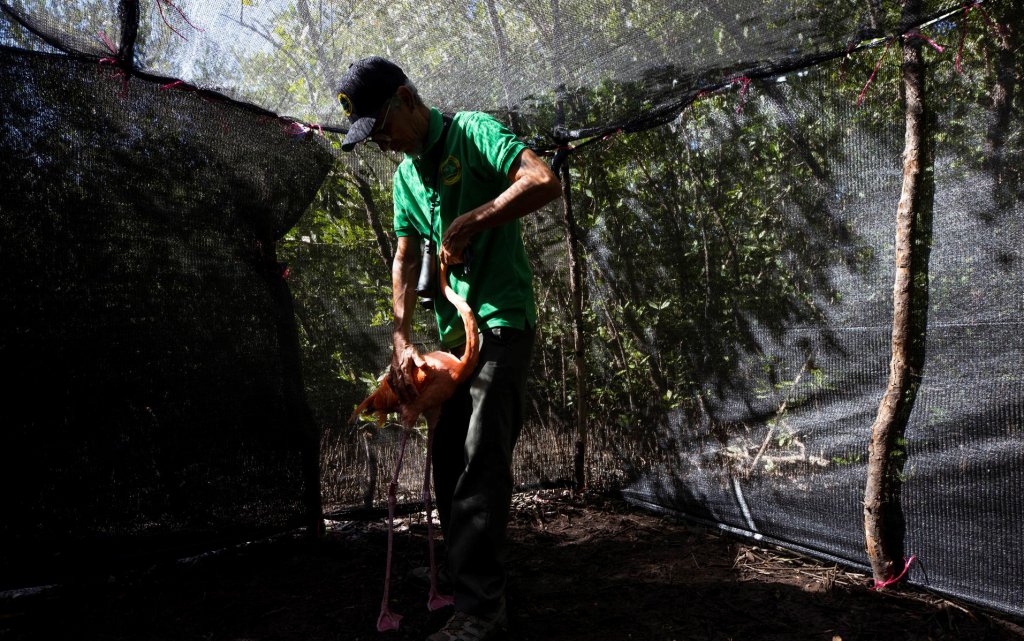Flamingos used as decorations in Dominican hotels regain their freedom

With the first light of day, several flamingos return to nature in the mangroves of Montecristi’s Estero Balsa Natural Park, where they were rescued and rehabilitated after being used as an ornamental element in hotels throughout the country. EFE was present at the first release of flamingos from the Rescate Rosado project, which returned six specimens of this migratory bird to their natural habitat after being voluntarily handed over by hotel establishments, and who shared their first dawn in freedom with five other birds born at the Zoo. The group of birds, determined, flew towards the lagoon’s waters, while the project team held their breath. When they saw that, they flapped their wings, flew to the water, and began to eat naturally (it is sometimes necessary to feed them freely for a while).
Its incorporation into the Estero Balsa mangroves, one of the most important in the country and recently included in the Ramsar Convention for the protection of wetlands were a success, and other specimens that remained in the area were even added. They will make their home in a relatively well-preserved area with coastal lagoons, flamingos’ preferred habitat, where they will find shelter, food, and tranquillity. The young specimens raised in the zoo will most likely migrate with other conspecifics in the spring, but the six from the hotels will not be able to do so because, when captured, they undergo surgery on one wing that prevents them from flying for an extended period.
“The last phalanx of one of their wings is removed, which is where the primary feathers are inserted,” and because they only have primary feathers on one wing, “they will not fly anymore, they will stay on land,” explained Luis Freites, the person in charge of animal welfare and training at the National Zoo, to EFE. Poachers hunt them in the estuaries where they land each year to sell them on the black market using rustic traps made of small stakes and nylon string ties placed at the bottom of the wetlands, barely visible in the water, and that environmentalists remove by the hundreds.

















